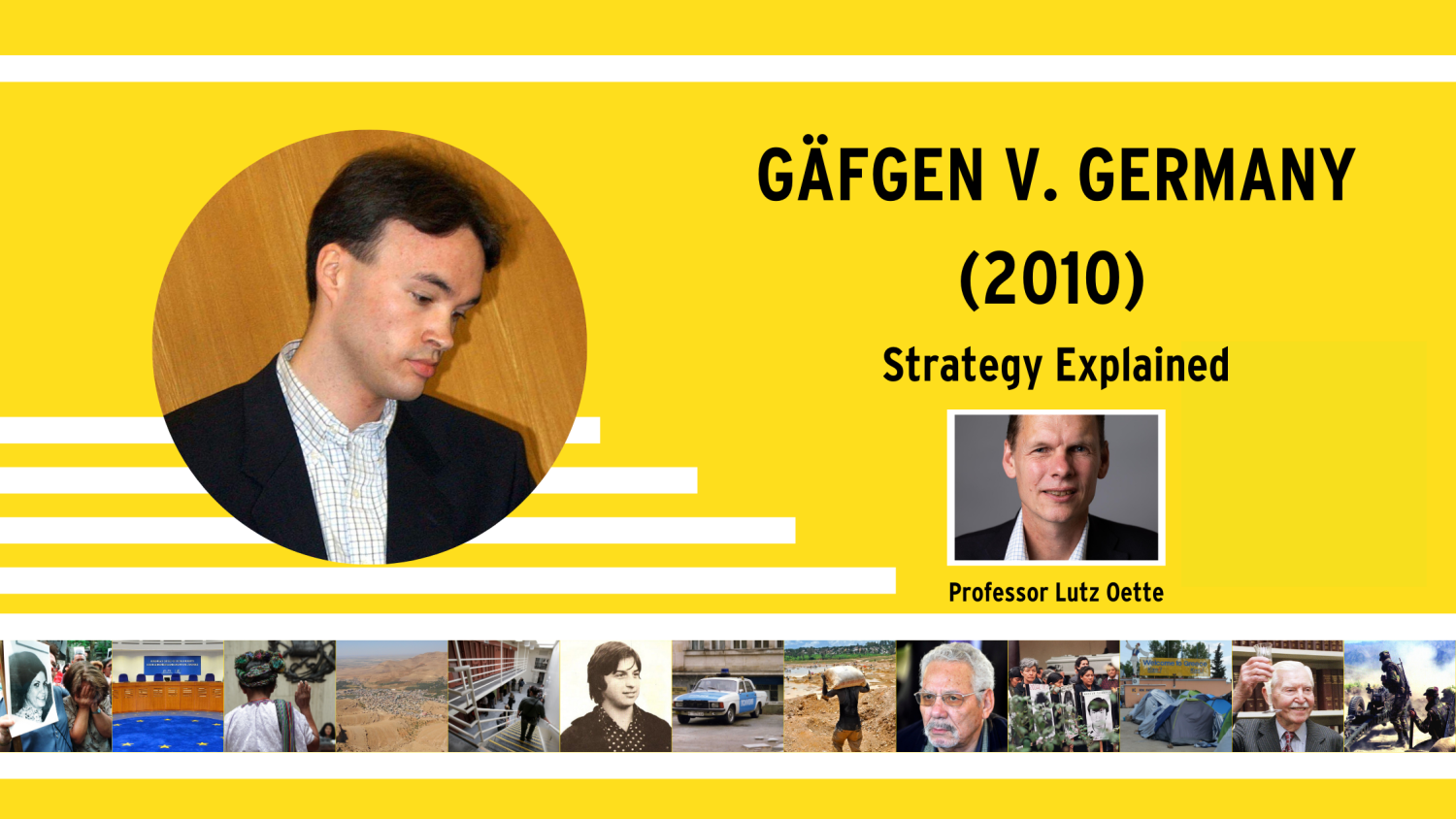
Gäfgen before the European Court of Human Rights: The ‘German Torture’ Case by Lutz Oette
This is the third blog in a series featuring legal representatives and experts in the field of strategic litigation against torture discussing the strategic impact of cases catalogued in our Casebook I.
In this blog piece, Lutz Oette, one of the interveners in the Gäfgen in the Gäfgen v. Germany case and Professor of International Human Rights Law at SOAS University of London, examines its most strategic features.
The features of the Gäfgen case were remarkable, and the case prompted much debate as well as strong reactions in Germany and beyond.
Download Casebook I
Gäfgen v. Germany (ECtHR, 1 June, 2010)

Professor Lutz Oette
The features of the Gäfgen case were remarkable: police officers threatened the kidnapper of an 11-year-old boy, Jakob von Metzler, with torture to save the child’s life, not knowing that the boy had already been killed. The case prompted much debate and strong reactions in Germany and beyond. As interveners, members of the German public denounced us as seeking to protect a child murderer.
Our intervention was motivated by what was at stake. The Gäfgen case, brought before the European Court of Human Rights (ECtHR) amidst the so-called ‘War on Terror’, played out against a background of intense debates on the justifiability of torture, particularly in ‘ticking bomb scenarios’. When the case was referred to the Grand Chamber, it was imperative for us to support an interpretation upholding the absolute prohibition. Considering that the German courts, the ECtHR Chamber in its initial ruling, and the parties had all agreed on that point, this part of the judgment proved to be straightforward. The strategic importance of the case was therefore, in this regard, to affirm the status quo, a fact that played an important role in subsequent debates on the absolute prohibition.
Demonstrating the Scope of Article 3 and Article 6 of the European Convention on Human Rights
Beyond this aspect, our main objectives were to demonstrate that a threat of torture falls within the scope of article 3 of the European Convention on Human Rights, that reparation must be provided for such ill-treatment, and that the so-called fruits of the poisonous tree (real evidence obtained as a result of torture or ill-treatment) should be excluded under article 6.
The Court cited our intervention and its judgment reflected several of our arguments. However, it also applied questionable reasoning. It considered, rather problematically, the lack of discernible long-term psychological consequences in its evaluation of what type of ill-treatment Gäfgen had suffered (inhuman treatment, not torture). Controversially, after stating that real evidence obtained through ill-treatment should normally be excluded, it introduced the notion of ‘a break in the causal chain’ between the inhuman treatment and Gäfgen’s conviction, which enabled it to hold that the former did not render the latter unfair. As highlighted in the scathing joint partly-dissenting opinion, such reasoning relativised the breach of article 3 through which incriminating real evidence had been obtained. It was probably grounded in the Court not wanting to antagonise Germany, as a finding of a breach of article 6 would have necessitated a retrial of Gäfgen. The judgment therefore set a questionable precedent of an artificially constructed justification, which, overall, rendered the outcome decidedly mixed.
Casebook Series
The REDRESS Casebook series showcases around 80 case studies of strategic litigation against torture from around the world to illustrate best practices to help strengthen the capacity of human rights lawyers worldwide. It was produced with financial assistance from the EU under the United Against Torture Consortium initiative.
- Seeking Justice: Two Decades of Fighting Impunity for Enforced Disappearances in the North Caucasus by Elba Bendo
- Breaking the Chains: How El-Sharkawi’s Case Exposes Egypt’s Systemic Repression by Natasha Arnpreister and James Goldston
- First Attempt to Apply Universal Jurisdiction to Algeria’s Dirty War: The Khaled Nezzar case in Switzerland by Benoit Meystre
- The Strategy Used in Velasquez Rodríguez v. Honduras by Juan Méndez
